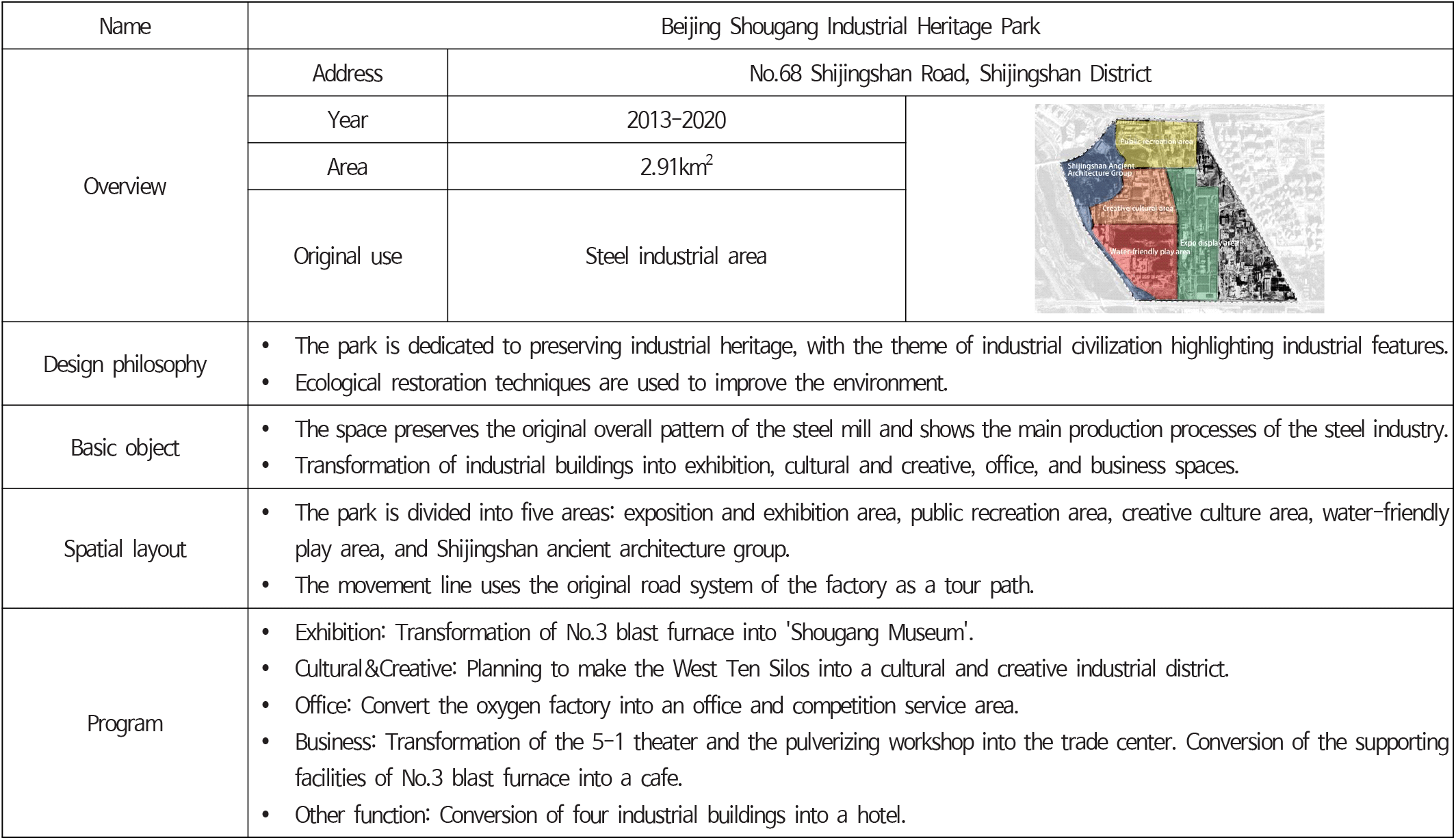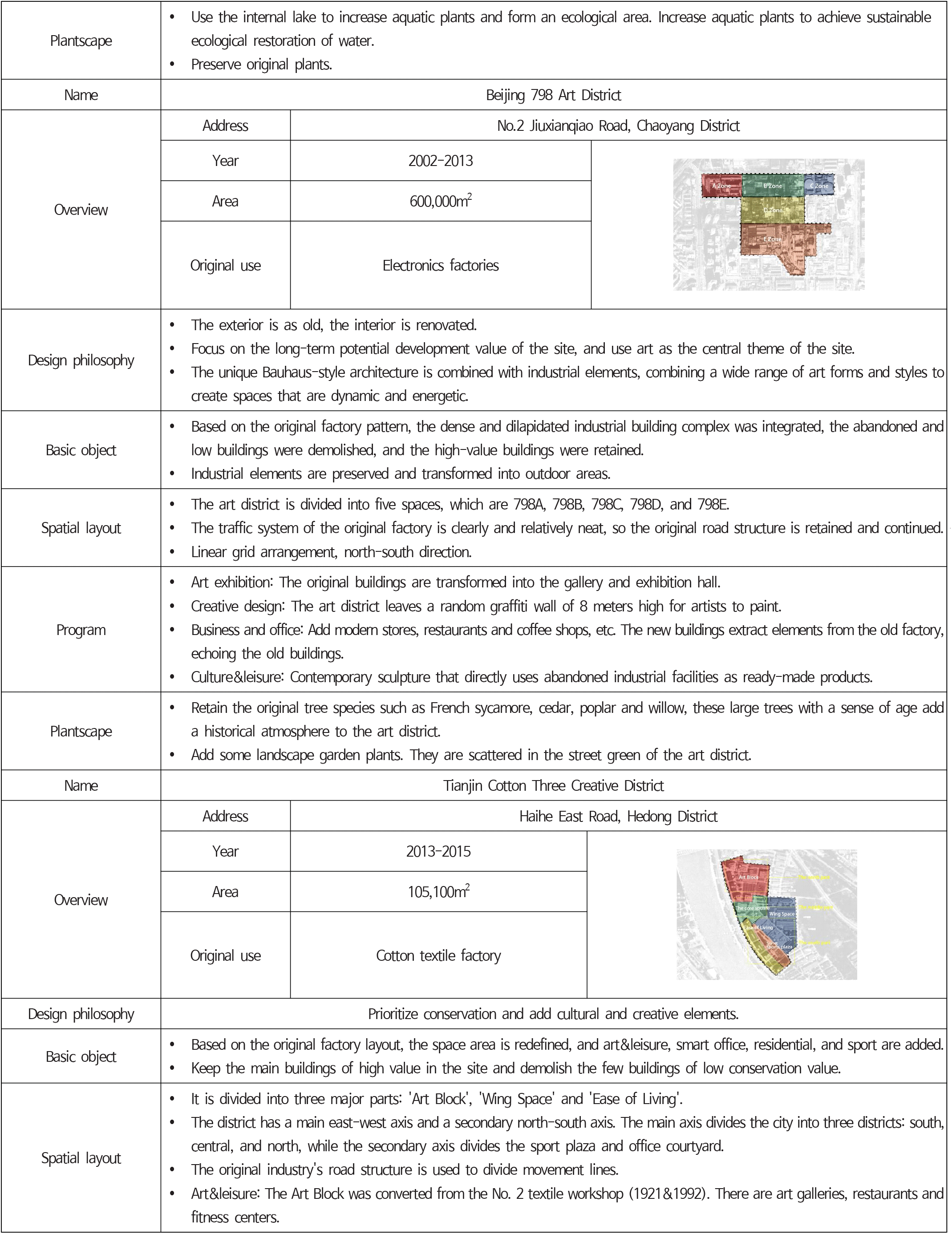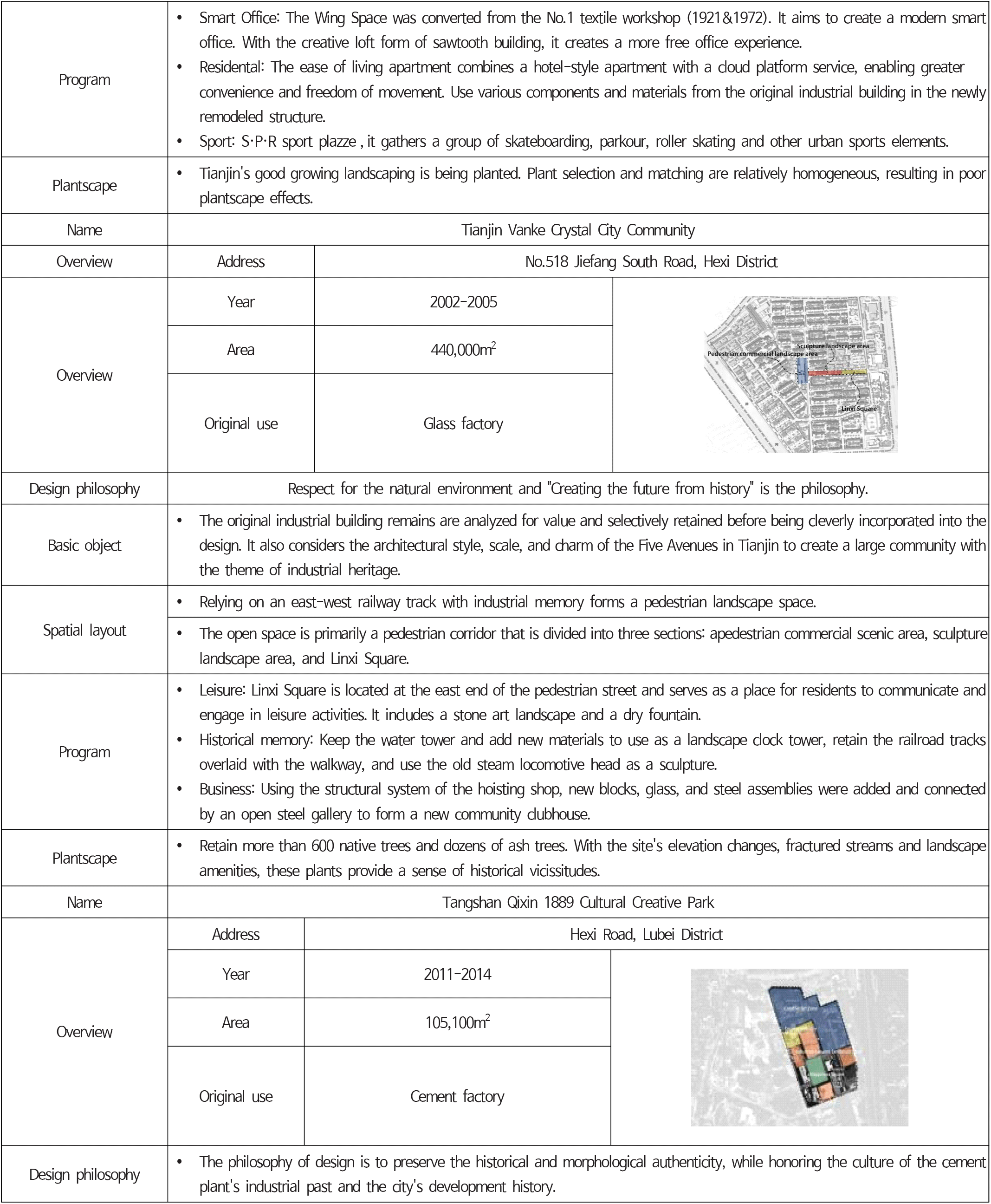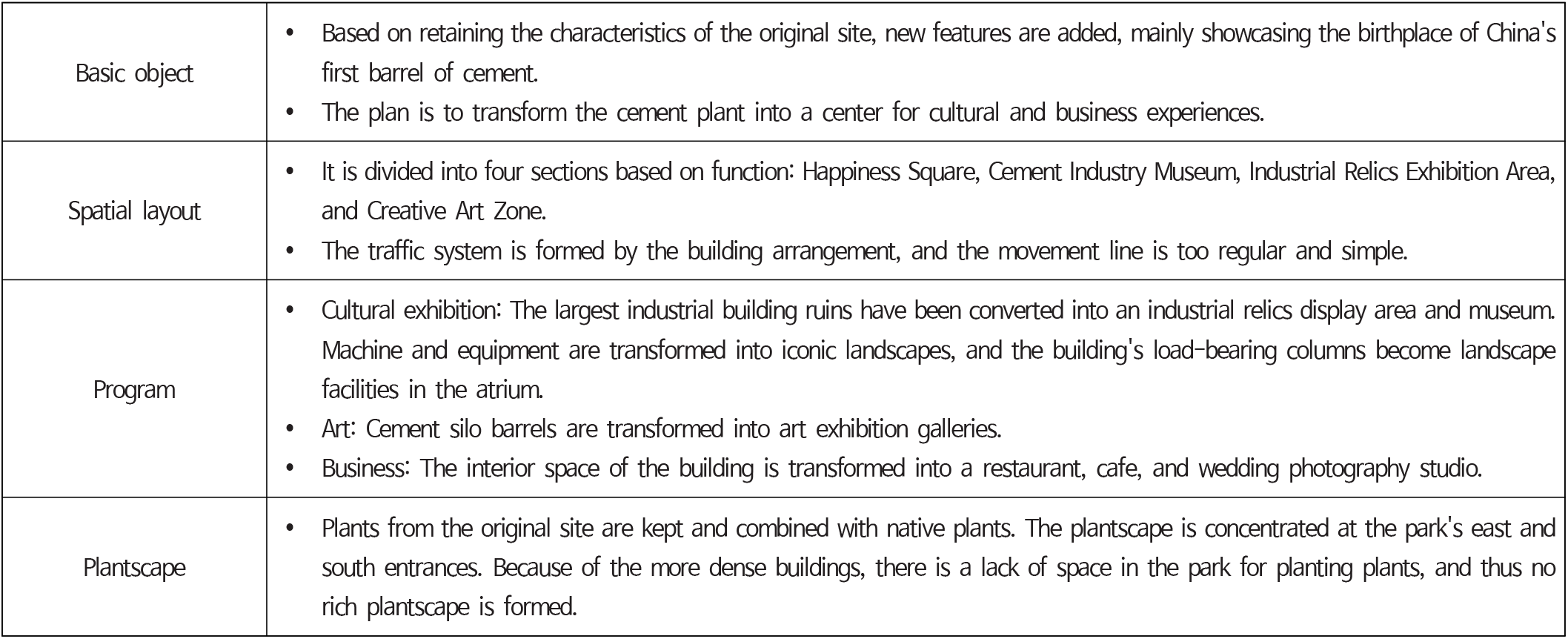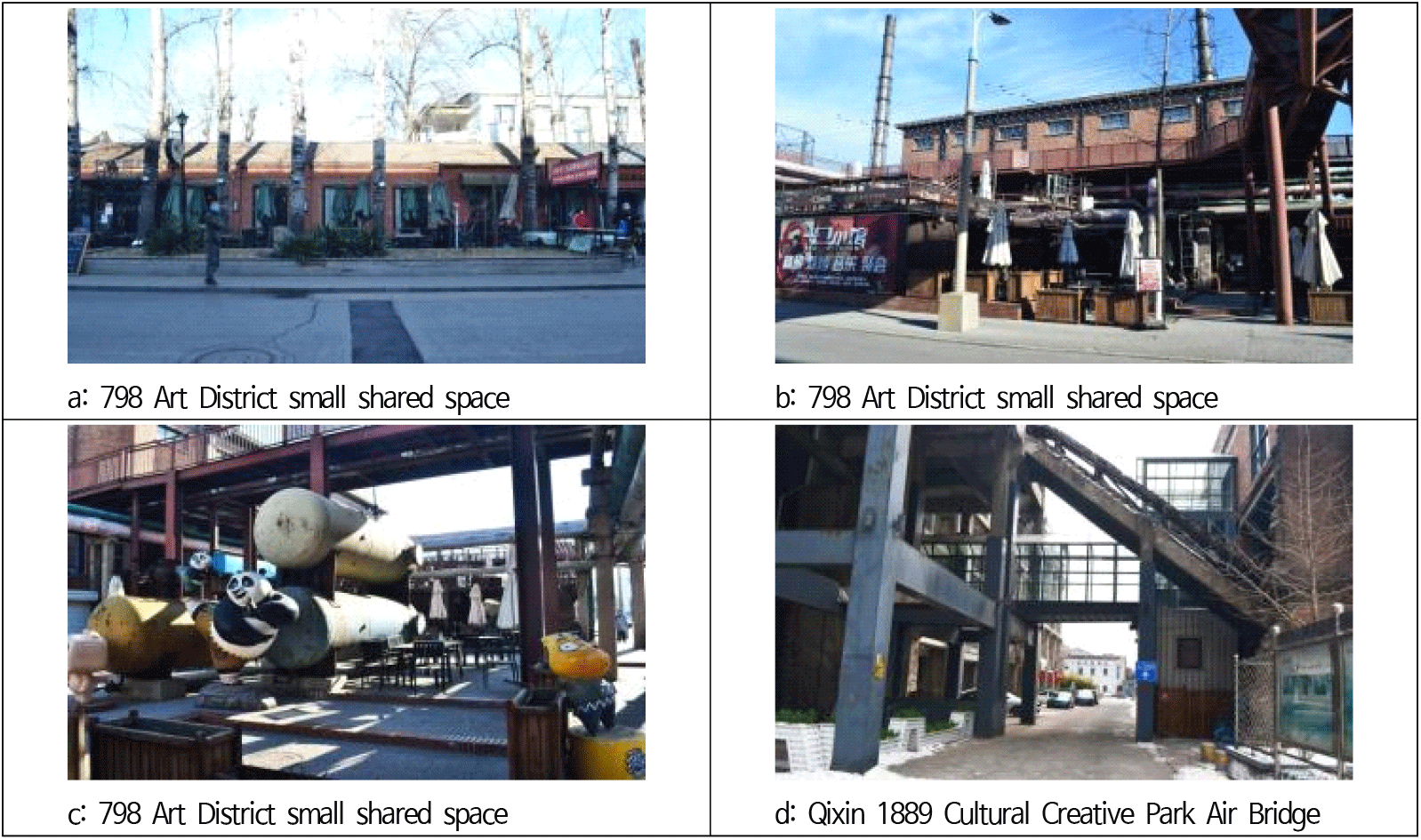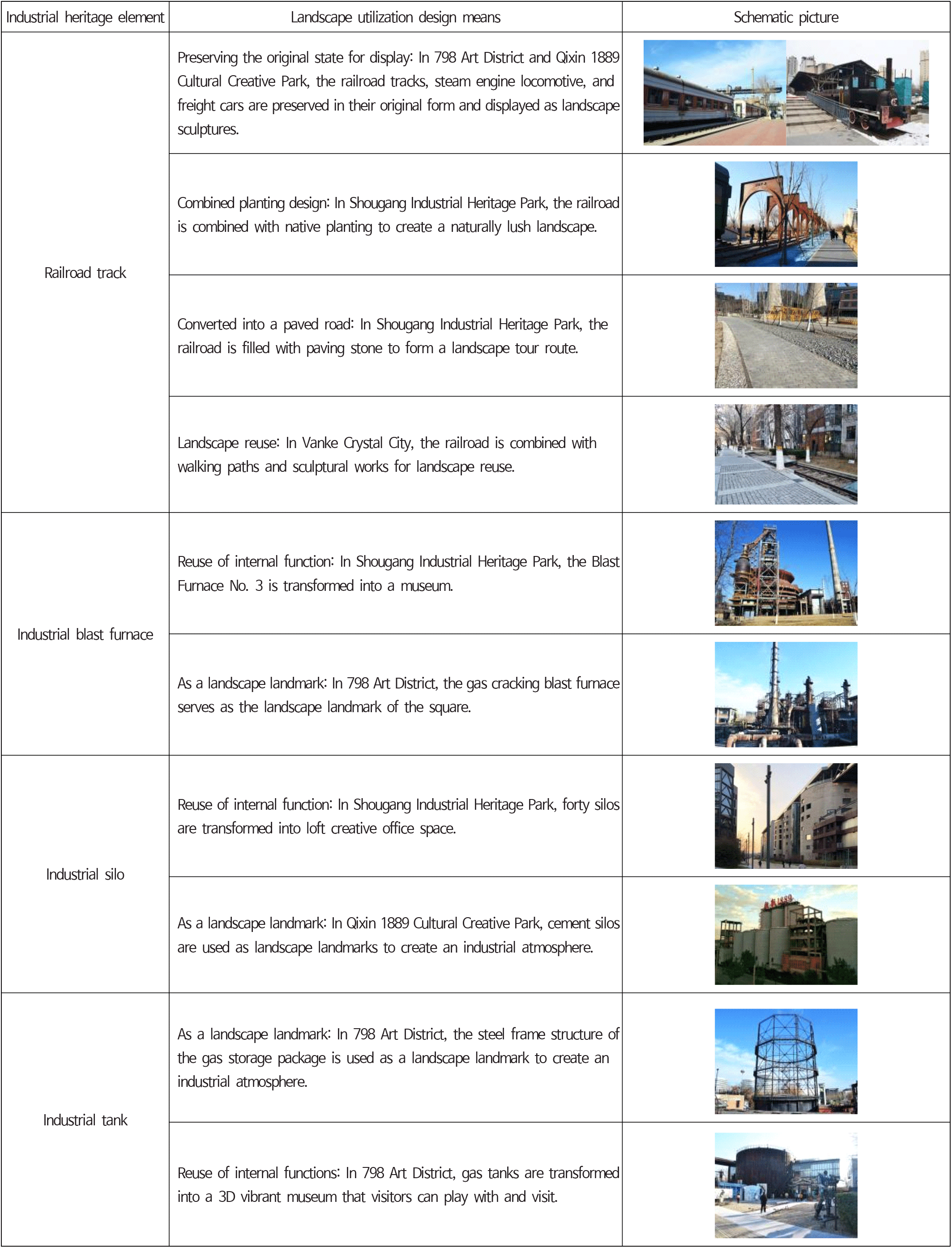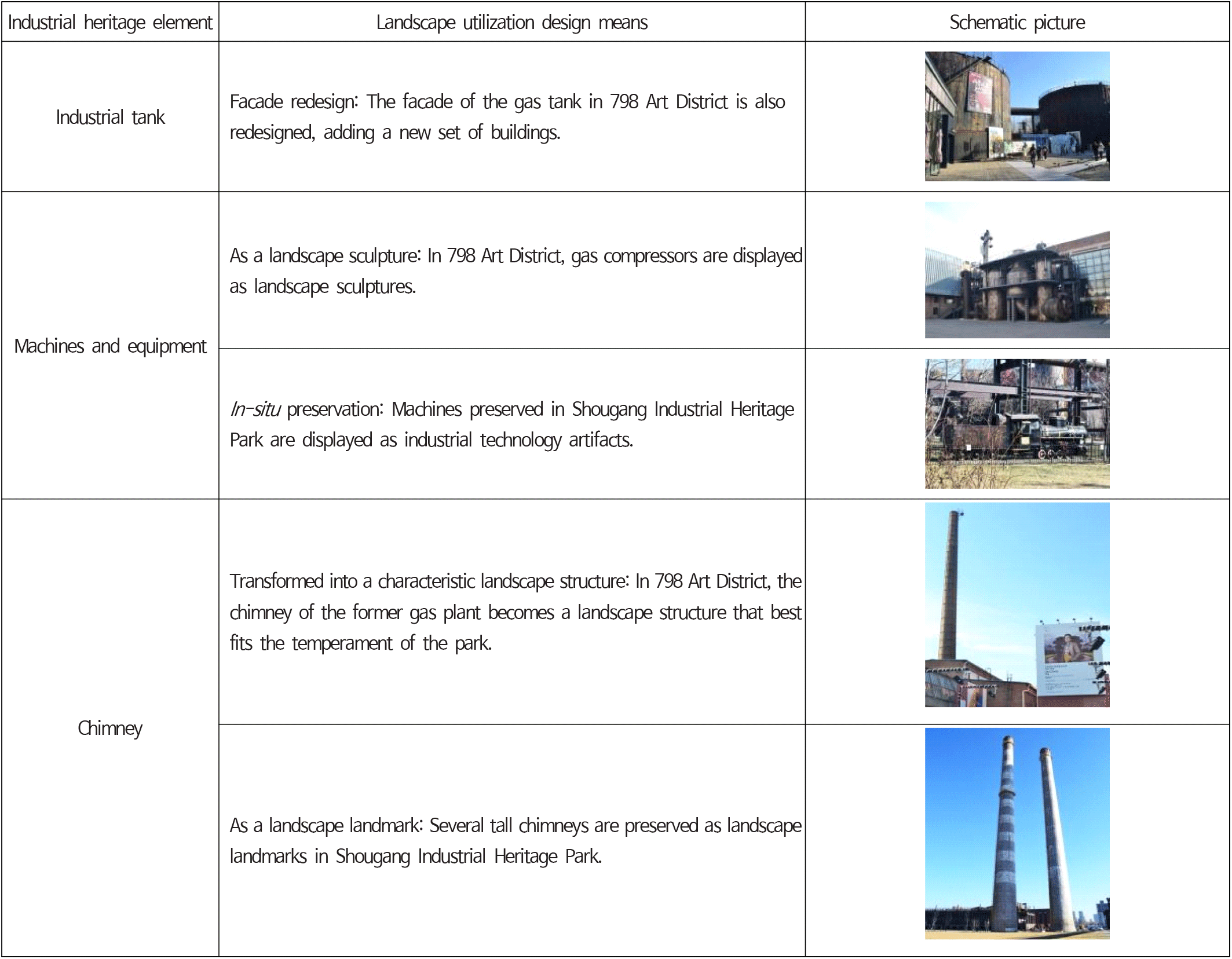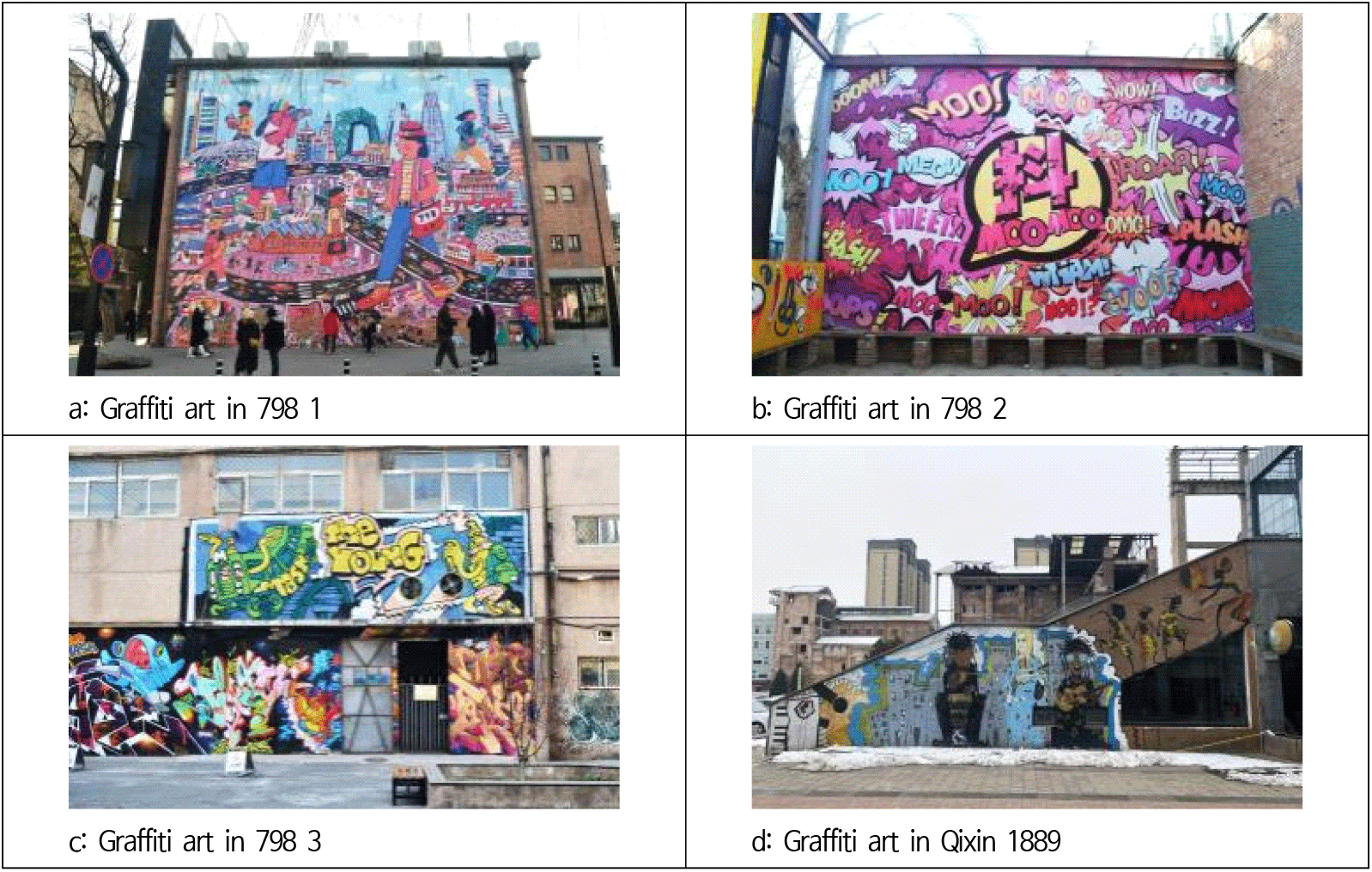1. Introduction
China’s industrialization began late but grew rapidly. Traditional industrial bases lose vitality as industrialization advances. Numerous post-industrial sites have been produced by the process of industrial transformation. New industrialization and urbanization continue to drive an increase in the number of post-industrial sites (Zheng, 2015). Due to environmental, economic, and social issues caused by post-industrial sites, urban construction is extraordinarily challenging. Thus, post-industrial sites must be dealt with urgently in urban construction.
In China, research on the revitalization of post-industrial sites has lagged behind. In the 2000s, post-industrial site revitalization emerged for the first time (Pan and Wu, 2009). Regeneration of post-industrial sites in China has begun to demonstrate results in accordance with the excellent transformation theories and the successful practices of post-industrial site regeneration in western countries (Zheng, 2015). However, the research on post-industrial sites has ignored the different industrial cultures of China and Western countries, as well as the characteristics of post-industrial sites. The theories are not mature enough.
Post-industrial site regeneration is the primary focus of brownfield regeneration in China because of their relatively high regeneration value. Post-industrial site regeneration has shown great environmental, economic, and social benefits. It has become a general consensus that post-industrial site regeneration is one of the most effective ways to provide urban green space and open space. From this perspective, the study of landscape design strategies for post-industrial site regeneration is relevant to urban construction and sustainable development at this stage.
In terms of policy context, post-industrial site management policies in China lack a systemic and persistent nature, and often consist only of campaign-style management that does not guarantee long-term effectiveness. There are merely regulations governing pollution control in industrial production processes, such as the Water Pollution Prevention and Control Law, the Air Pollution Prevention and Control Law, and the Solid Waste Pollution Prevention and Control Law. Zhuo (2019) introduced the land management policies relating to post-industrial sites in China, specifically ‘Land Reclamation Regulations (2011)’ and ‘Soil Pollution Prevention and Control Law (2018)’. Liu (2021) argues that China’s post-industrial site governance laws are scattered among many laws and do not have specific rules or regulations.
In terms of practical work, industrial heritage conservation in architecture and post-industrial landscape practice in landscape architecture have now become major forces in regenerating post-industrial sites. In 2001, the Qijiang Park project, which was built on the former site of the Yuezhong Shipyard, marked the early stages of post-industrial site development in China. Shanghai Houtan Park and Beijing 798 Art district are also relatively successful projects. At present, China’s post-industrial site regeneration projects are concentrated in large cities such as Beijing, Shanghai, and Guangzhou. During the period 2017-2021, 194 industrial heritage projects in five batches of the ‘National Industrial Heritage List’ of the Ministry of Industry and Information Technology have accelerated post-industrial site practices.
In terms of theoretical research, landscape architecture has focused primarily on the design content of post-industrial site regeneration from the post-industrial landscape perspective. Wang and Ren (2003) compile landscape design ideas and design techniques for the transformation of post-industrial sites into parks by studying overseas cases. By analyzing the ecological characteristics of the landscape and the environmental effects of post-industrial sites, Cui (2010) elucidates the methods of ecological restoration and proposes the principles of sustainable landscape transformation. Wang and Zhao (2011) focus on the case of post-industrial site regeneration in the United States and discuss the experience that can be learned from China’s urban development by analyzing the methods of site ecological restoration and postindustrial site landscape regeneration. Liu and Wang (2019) assess the value of reclaiming post-industrial sites by examining the Duisburg-Nord Park in Germany from the point of view of industrial products, wild plants, spatial sequences, and water features. Cheng and Yao (2020) study the theory and principles of urban post-industrial sites’ landscape transformation and utilization. In addition, there are also studies concerning the preservation of industrial heritage. Liu (2009) provides a more detailed analysis of urban land renewal and industrial heritage conservation in ‘Urban Industrial Land Renewal and Industrial Heritage Conservation’. A primary focus of this book is on the revitalization of urban industrial land and the preservation and utilization of industrial architectural relics.
As stated previously, the study of post-industrial site regeneration began only about twenty years ago. A substantial body of research has not yet been accumulated in this field. Most of the available results are based on post-industrial site regeneration cases in foreign countries. In China, local post-industrial site regeneration research is still lacking. Therefore, it is necessary to examine cases of post-industrial site regeneration in China and summarize their experiences. The Beijing-Tianjin-Tangshan region is an old industrial centre in China and a typical area for post-industrial site regeneration, but it is not included in the current study. Due to this reason, this study focuses on the case of post-industrial site regeneration in the Beijing-Tianjin-Tangshan region. This is the difference and significance between it and previous research.
This paper is aim to discover the implications through analysis of the characteristics and design strategies of regeneration in the post-industrial sites at the Beijing-Tianjin-Tangshan region which is the metropolitan area. It provides a basis for future research and theoretical strength for post-industrial site regeneration practices.
This paper needs to begin with a definition of post-industrial sites in China that distinguishes them from other types of brownfields. Post-industrial sites are sites that were previously used for industrial production or directly supported it, such as old factories, shipyards, abandoned docks, etc. Infrastructures such as transportation facilities, pipeline facilities, and logistic reserve facilities are also included.
This study examines five completed post-industrial regeneration projects in Beijing, Tianjin, and Tangshan. They are Shougang Industrial Heritage Park and 798 Art District in Beijing, Cotton Three Creative District and Vanke Crystal City Community in Tianjin, and Qixin 1889 Cultural Creative Park in Tangshan.
Literature on post-industrial site regeneration has been examined to understand the current research status. Field research was conducted in Beijing (Shougang Industrial Heritage Park and 798 Art district), Tianjin (Cotton Three Creative Park and Vanke Crystal City Community) and Tangshan (Qixin 1889 Cultural Creative Park) between July-August 2018 and January-February 2022 to determine the conditions of the sites. Many photographs were taken in order to complement the content of the paper.
Based on the results of the literature review, Wang and Ren (2003) see the utilization of industrial heritage, pollution treatment, and plant restoration as the key elements of post-industrial site regeneration. Wang and Zhao (2011) analyze the cases based on ecological design, industrial heritage landscape design, and waste reuse. Liu and Wang (2019) present their findings based on industrial products, wild plants, spatial sequences, and water features. Accordingly, this study provides a comprehensive analysis of the project location, scale, year of regeneration and use of the site before regeneration. The design content analysis is based on the design philosophy, basic object, spatial layout, programm and plantscapes (Table 1).
On this basis, the general design strategies are summarized and interpreted for different post-industrial site regeneration cases. Landscape design strategies for post-industrial site regeneration are described in terms of six aspects: regeneration goal, space integration, element reorganization, ecological restoration, design and art combination, and public participation.
2. Overview of Post-Industrial Sites in the Beijing-Tianjin-Tangshan Region
The Beijing-Tianjin-Tangshan region is situated in the northern portion of the North China Plain, along the coast of the Bohai Sea. Three cities are located 110 to 150 kilometers apart, forming a square triangle. There are various types of landforms, mainly plains, mountains and hills. The main rivers are part of the Haihe and Luanhe water systems, respectively.
The Beijing-Tianjin-Tangshan region is one of the four major industrial bases in China, which are home to the famous Kailuan coal mine, the Jingxi coal mine, the Qian’an iron ore mine, etc. Also nearby is the Changlu Salt Farm, one of the four major salt farms in China, as well as the famous Dagang Oil Field and Renqiu Oil Field. It is a fact that railway transportation and shipping are well developed, as well as the original industry, science, and technology in the Beijing-Tianjin-Tangshan region. This provides good conditions for the development of the regional industrial economy. As a result of large-scale economic development since the founding of the country, the Beijing-Tianjin-Tangshan region is now considered one of China’s most developed economic regions. Tianjin and Beijing have become more complete industrial categories, comprehensive and strong cities, with Beijing’s petrochemical, electronics, culture, education, arts and industries, and Tianjin’s marine chemical and daily light textile industries. Tangshan has established itself as an important industrial city in Hebei, and is known for its coal, metallurgy, ceramics and other industries.
Beijing’s post-industrial sites are mainly located in large and medium-sized old industrial zones along and around the Fifth Ring Road, such as Beijing Shougang Factory, West Fifth Ring Industrial Zone, Fengtai Industrial Zone, Urban Construction Group Storage and Transportation Corporation, Beijing Chemical Industry Factory No. 3, Beijing Hongshi Paint Factory, Fatou Industrial Zone, Industrial Zone along Tonghui River, Dashanzi Industrial Zone and Huangzhuang Industrial Zone (Figure 1).
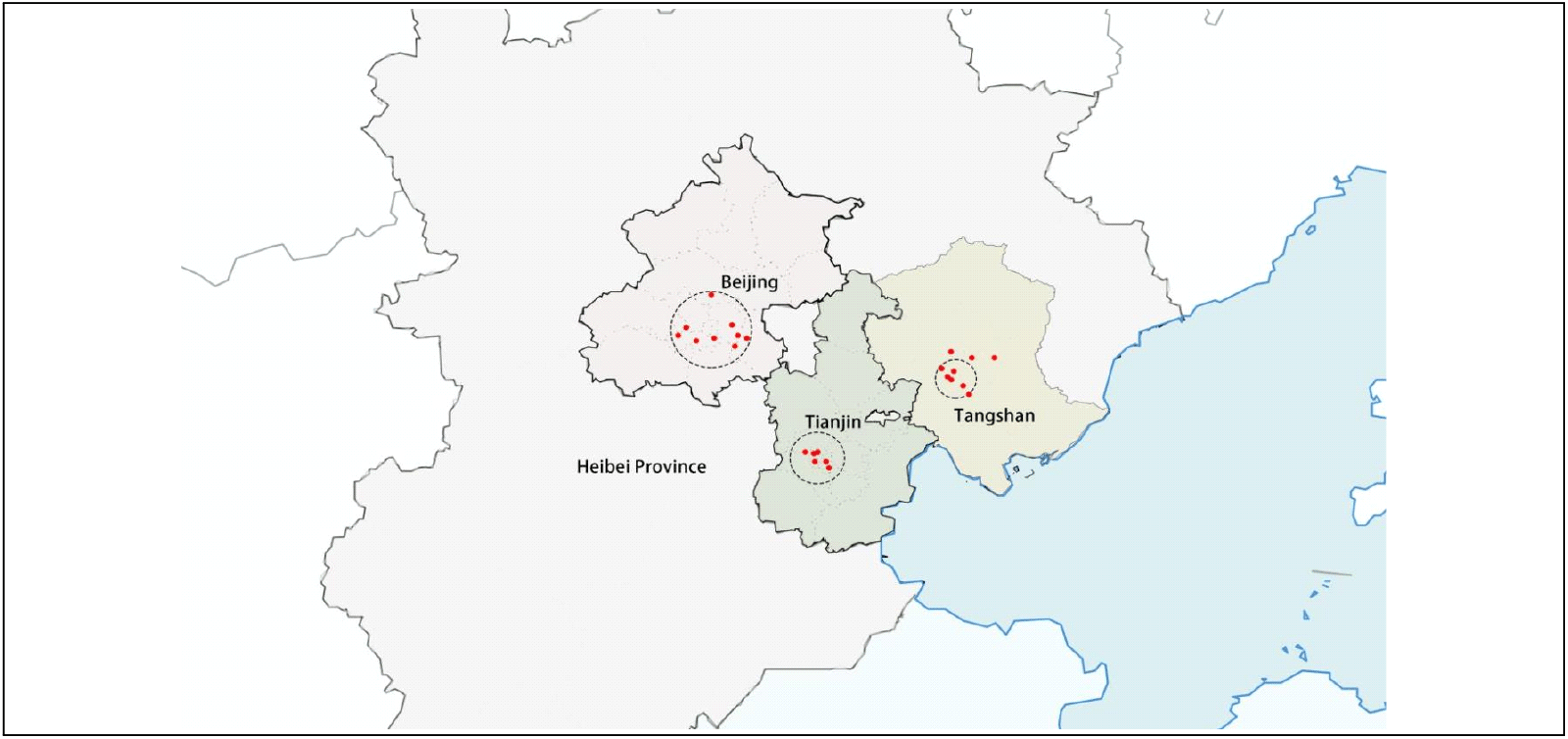
Tianjin’s post-industrial sites are located in Nankai district, Hedong district and Hongqiao district, covering large areas such as the Tianjin Heavy Machinery Factory and Tianjin Tractor Factory. Large areas of the factories are vacant and need to be given new functions in order to revitalize them. Tianjin was developed by the Haihe River, and most factories were built here. Therefore, the post-industrial sites in Tianjin are mainly concentrated along the Haihe River (Figure 1).
Tangshan’s post-industrial sites are made up of various industrial types, including coking, electric power, machinery, metallurgy, casting and light industry. Some of the post-industrial sites are closely related to Tangshan’s economic development. Mostly in the Lunan district and Lubei district of the city center, with a concentrated spatial distribution. There are fewer and scattered post-industrial sites in Tangshan’s surrounding areas (Figure 1).
The site terrain of the post-industrial site in the Beijing-Tianjin-Tangshan region is flat without significant elevation changes. The majority of industries are heavy industries such as steel, cement, and chemical factories. Thus, the most prominent spatial features on the site are large industrial buildings and facilities (Figure 2a).

Beijing-Tianjin-Tangshan’s post-industrial sites have been affected by extensive human intervention resulting in a landscape substrate. There has been some damage to the ecology of the site due to long-term industrial production activities in the past. In addition, the rail transportation system, road system, and industrial facilities built for production on the site have severely damaged the original landscape pattern. The continuity of the landscape has been broken and fragmented (Figure 2b).
The industrial history of the Beijing-Tianjin-Tangshan region is a colorful piece of China’s industrialization development process. As relics of the past, post-industrial sites provide witness into the industrial evolution of a region. Numerous historic structures that reflect the aesthetics of industrial technology and innovation can be found in post-industrial sites. This is a significant cultural aspect of these sites. The post-industrial sites are also a testament to the lives and labors of the region’s inhabitants. They carry the strong emotional identity and profound sense of belonging of urban residents in the Beijing-Tianjin-Tangshan region (Figure 2c).
3. Case Study
Located in the north area within the Shougang industrial zone in the Shijingshan district of Beijing, Shougang Industrial Heritage Park occupies approximately 2.91km2. Shougang Industrial Building Heritage Park is an urban open space with a variety of functions. It emphasizes the concept of conservation by systematically and completely protecting industrial facilities with distinctive features, such as raw material silos, blast furnaces, coke ovens, etc. The theme is industrial civilization, which highlights the characteristics of the industrial landscape and explores the potential value of the repurposing of industrial buildings in excellent and efficient ways. The old functions, industries, and cultures are transformed in order to adapt to the new characteristics of each building. Ecological restoration technologies improve the environment. Shougang Industrial Heritage Park has become a classic landscape project in China’s post-industrial site regeneration (Table 2).
The 798 Art district, which encompasses approximately 600,000 m2, is located in northeast Beijing’s Dashanzi district. It used to be the old factory area of the former state-owned 798 factory and several other electronic industries. The artist initiated the renovation of the factory buildings in Beijing 798 as a personal act. The renovation was based on the philosophy ‘the exterior is as old, the interior is renovated’ so that the original industrial elements could be preserved following government intervention. The primary purpose of the design is to reuse the old buildings adaptively. The designers focused on the long-term potential development value of the factory site and integrated industrial elements with distinctive Bauhaus-style architecture. With art as the central theme of the district, a wide range of art forms and styles are incorporated to create a vibrant and active community. Gas plants, railroad tracks, and industrial elements are preserved and transformed to create an open space for outdoor performances and tours (Table 2).
Cotton Three Creative District is located in Tianjin’s Hedong District and covers an area of 10.51hm2. It was formerly the Tianjin Cotton Spinning Plant No. 3. The factory’s construction began in 1921 and continued until the end of the 20th century. During the interim, construction activities have continued. Thus, the Cotton Three Factory has many industrial buildings from different periods. Many of these have high historical and cultural value. Therefore, the Cotton Three Creative District cannot adopt a total demolition renewal strategy. It is necessary to prioritize the preservation and integration of creative and industrial elements. The Cotton Three Creative District has become the first new creative district integrating innovative design, business consultation, art exhibition, new media service, cultural leisure, and talent training in Tianjin (Table 2).
Tianjin Vanke Crystal City is the first purely commercial development project in China. It is located in the ecological residential area of the Meijiang River in the south of Tianjin city and the former site of Tianjin Glass Factory. It covers an area of 440,000m2, with a planned total construction area of about 400,000m2. The plan is based on the philosophy of ‘building the future out of history’ with due respect for the environment. The original industrial building remains are analyzed for value and selectively retained before being cleverly incorporated into the design. It also considers the architectural style, scale, and charm of the Five Avenues in Tianjin to create a large community with the theme of industrial heritage (Table 2).
Qixin 1889 Cultural Creative Park is located in Tangshan’s Lubei District, covering an area of 10.7hm2. It was formerly known as Qixin Cement Factory. The design philosophy of Qixin 1889 Cultural Creative Park is to preserve the form’s history and originality. The plan adopts a functional replacement method, which combines the needs of citizens in the context of the new economy with the preservation of original historical appearance. The cement factory has been turned into a cultural and commercial experience center. Through the penetration of creative fashion culture in the regeneration of the post-industrial site, the reconnection between city and people is achieved (Table 2).
4. Landscape Design Strategy of Post-Industrial Site Regeneration in Beijing-Tianjin-Tangshan Region
The original site of Beijing’s Shougang Industrial Heritage Park is an post-industrial site with significant value in representing the history of urban development. Therefore, the regeneration model is based on preserving the industrial heritage. Furthermore, 798 Art District, Vanke Crystal City, and Qixin 1889 Cultural Creative Park have renovated industrial buildings and facilities to preserve industrial heritage. Because of the high-intensity plasticity of the landscape, the industrial heritage conservation orientation is highly adaptable for many post-industrial sites (Figure 3).
798 Art District, Cotton Three Creative District, and Qixin 1889 Cultural Creative Park adopt the cultural creative oriented regeneration model. In addition, Shougang Industrial Heritage Park injects cultural and creative elements into the old industrial heritage as a new function. The cultural creative-oriented regeneration can significantly enhance urban artistic style and tourism system (Figure 3).
Vanke Crystal City is a regeneration model that uses demolition and reconstruction to create a new urban community. The regeneration model of urban communities is the same as the traditional neighborhood development model. Small-scale neighborhoods are formed by combining well developed infrastructure with a reasonable spatial scale of neighborhood units and landscape facilities. In addition, the design of the Cotton Three Creative District also focuses on the space of neighborhood units and the construction of small-scale neighborhoods (Figure 3).
The site’s original spatial characteristics and texture structure are respected and utilized. The corresponding landscape functional zone is determined according to the different sites (ex: the original road alignment, the orientation and rhythm of the building arrangement, the layout characteristics of industrial facilities and processes, etc.) (Table 3).
Respectful inheritance is not about maintaining the original but about defining new landscape functions based on the original spatial features and making them echo the original site features. Such as the enclosed open space between the building and the facility served as a staging area for raw materials or finished goods. This enclosed space can be utilized by the landscape designer to create a plaza. At the same time, the design gives more functions to the plaza. Such as the use of unique paving forms or materials to highlight the industry theme (ex: 798 Art District’s Old Furnace District Square). The addition of local water features, dotted planting and other landscape elements enrich the spatial changes of the site (ex: Vanke Crystal City Community Linxi Square’s water features). The design of small stands and stages gives the square the content of cultural activities (ex: Shougang Industrial Heritage Park Coking Plaza’s outdoor performance stage).
The new elements are embedded in large-scale site spaces or industrial facilities to form a new spatial interface. It can effectively reduce the oppressive and heavy feeling of the original large-scale industrial facilities. 798 Art District has many small shared spaces, including green plants, benches, and sunshades between buildings and industrial facilities (Figure 4a-4c). The air-bridge connecting the buildings has been added to Qixin 1889 Cultural Creative Park. It not only solves the problem of connection between factory buildings, but also breaks the isolation of tall buildings (Figure 4d).
The superposition of vertical spatial levels is designed according to the spatial characteristics of the post-industrial site. Firstly, there are usually recessed spaces below the elevation of the horizon in industrial production, such as silos for raw materials, sinks for sewage treatment, and water tanks in industrial processes. Secondly, the ground level is the most prevalent level of site use. It is also the level with the most concentrated landscape content. Thirdly, the aerial level refers to many tall pieces of equipment, pipelines, and aerial maintenance and operation paths in the post-industrial site.
In the 751D-Park of 798 Art District, the recessed space is transformed into a landscaped pool. The grass, wooden platform, and original concrete materials form a more richer ground level. At the air level, a new north-south air corridor is built using the original overhead industrial pipeline structure. Shougang Industrial Heritage Park also has three spatial levels.
The site’s existing industrial landscape remains are reasonably utilized and designed to make these industrial landscapes more integral and distinct. Based cases, the author compiled the means of landscape use of the industrial relic elements (Table 4).
By preserving the relics of the industrial landscape, the new design element harmonizes with the original industrial landscape of the site.
Firstly, this harmony is reflected in the unity of the new design character with the site’s historic character. In Shougang Industrial Heritage Park, the facade of the West Ten Silos is hollowed out and carved with circular holes. The silos have a distinctive industrial character and geometric form with a prominent symbolic meaning. In Qixin 1889 Cultural Creative Park, the newly designed facade adds metal and glass elements to the old building frame.
Secondly, this harmony is also reflected in the choice of design materials. The most common local stones are used as floor paving and masonry materials for landscape walls in the Vanke Crystal City community. At the same time, cast-iron railings reflect the heaviness of industry and echo the old factory buildings.
Finally, this harmony is reflected in integrating the original road traffic vein. In Shougang Industrial Heritage Park, the internal roads of the post-industrial site are organically linked to the surrounding environment and traffic. It forms an urban road texture that is independent from the outside world and at the same time connected to it.
The various contaminants in the post-industrial site are left in the soil throughout the site. Therefore ecological soil restoration is a crucial part of the process. Ecological restoration with plants not only slowly restores the fertility of the original soil but also is one of the most cost-effective ways to reduce pollutants. The authors summarized the technical means of ecological soil restoration through field research and a review of relevant literature (Table 5).
After years of use, the post-industrial site typically leaves behind a large quantity of valuable plants. Some are ancient trees with a lengthy past. Their preservation is essential to preserving the site’s historical continuity. Some of them are plants that grow naturally in the wild. Over time, they establish a new ecological equilibrium with the surrounding organisms, forming new biological populations. This has a substantial impact on the post-industrial site landscape.
Long-term industrial production has resulted in poor and polluted soils, making post-industrial sites unique. Due to their botanical properties and capacity to improve the soil, the most suitable plant material for such areas will be adapted plants for harsh environments. As a method of ecological management, these plants are adept at decomposing and absorbing harmful substances from the soil. They can attain a natural and wild form on a slightly polluted site and blend harmoniously with the landscape appearance of industrial ruins.
The sculpture is a typical component of landscape design. Using sculptural artworks in the design of post-industrial site regeneration can achieve twice the result with half the effort.
There are two types of contemporary sculptural art. Artist made sculptures are one category. In 798 Art District and Cotton Three Creative District, sculptures by various artists from different times periods are exhibited. They are placed and arranged in accordance with the requirements of landscape design (Figure 5, 6). In Vanke Crystal City and Qixin 1889 Cultural Creative Park, cast iron sculptures depict living conditions and scenes of industrial production (Figure 7).
The other type of sculpture is ready-made. Many industrial legacy products, machinery, and equipment can be incorporated into the aesthetic scope of ready-made sculptures. As ready-made sculptures, the transportation rack in Shougang Industrial Heritage Park, the industrial gas tank in 798 Art District, the locomotive in Vanke Crystal City, and the mechanical parts in Qixin 1898 Cultural Creative Park have artistic and aesthetic value.
The use of graffiti art is also a way to utilize the interface of the space for transformation. It is more flexible and less expensive. In 798 Art District, the spatial interface within the original post-industrial site is typically painted with production slogans and period-appropriate posters. These components are representative of history and culture. Graffiti walls contribute significantly to the atmosphere of the entire art district(Figure 8a-8c). There are numerous graffiti art applications in Qixin 1889 Cultural Creative Park. It is the artistic temperament which is added to the post-industrial site (Figure 8d).
With a rich industrial history and a variety of site space types, the redeveloped post-industrial sites have a close relationship with the city. They have gradually evolved into venues suitable for a range of commercial, athletic, and artistic activities in the city.
The 2022 Beijing Winter Olympic Organizing Committee relocated to Shougang Industrial Heritage Park in December 2015 under the guidance of the Green Olympics and Frugal Olympics concepts. Utilizing this opportunity, Shougang Industrial Heritage Park has been reborn as a major event. In addition, the park utilizes the site’s industrial heritage and matches the light environment effect to create a light and shadow art exhibition. It provides an immersive experience of the charm of industrial heritage and the art of light and shadow. On the basis of the industrial heritage, immersive industrial theme exhibitions have been held to demonstrate the steel industry’s workflow in its entirety.
Every year, the Beijing Design Week event chooses 798 Art District as one of its exhibition venues. In addition, the 798 Art District hosts the 798 Art Festival annually from late September to early October and welcomes all types of artists to exhibit their work.
The planning and holding of public events is also an effective way to energize the venue. Cotten Three Creative District has become a gathering centre for art and culture, leisure and entertainment, and business exchange in Tianjin with the help of designers’ presence and public activities. A variety of art events are held each year in the streets or courtyards here. From small concerts to advanced design art exhibitions, the public can participate according to their interests. There are various types of interactions broadly divided into economic, artistic, and sports. The economic theme is based on various sales fairs, selling second-hand items, collectibles, handicrafts, etc. artistic themes include various art festivals, design seminars, music festivals, festival-themed events, etc. Sports themes include skateboard competitions, outdoor fitness classes, etc.
5. Conclusion
This paper has attempted to take post-industrial site regeneration practice projects in the Beijing-Tianjin-Tangshan region as specific research objects and summarize the design strategies for post-industrial site regeneration from the landscape level by combining theory and practical examination. The landscape design strategies can be summarized as follows:
First, post-industrial site regeneration projects in the Beijing-Tianjin-Tangshan region pursue a diversity of goals such as industrial heritage preservation, cultural creativity, and neighborhood revitalization. In order to select the appropriate landscape design goals, it is important to consider the site’s location, economy, culture, environment and other factors.
Second, in the design process, the characteristics and spatial levels of the space are enhanced by utilizing the original industrial space, incorporating transitional space, and incorporating industrial facilities of varying heights. Maintain the spatial structure of the original site while adding new landscape elements to enhance its spatial characteristics. Embed transitional spaces in order to reduce the distance between the industrial relics and the visitor. Use industrial buildings that have varying heights in order to enhance the level of space.
Third, the old and new landscape elements are harmoniously integrated through the rational use of industrial relics and the appropriate addition of new elements. The new design style should be in harmony with the original industrial landscape scenery of the site.
Fourth, the design emphasizes ecological soil restoration and the use of native and adaptable plants. It also considers the ability of phytore-mediation to purify contaminated soil.
Fifth, the design combines modern artistic means such as sculpture and graffiti art. By utilizing modern artistic methods to deal with industrial relics, the industrial landscape’s aesthetic and the site’s vitality are improved.
Sixth, in the aspect of vitalizing the regenerated site, urban events and public activities are actively programmed.
Although post-industrial sites have existed in China for a long time, research into their solutions has been slow. It is imperative to explore the means of regenerating postindustrial sites in the particular social environment of China. It has important theoretical and practical relevance for the regeneration practice of many post-industrial sites in China to summarize the regeneration strategies of post-industrial sites in Beijing-Tianjin-Tangshan from the perspective of landscape architecture, clarifying the site characteristics and regeneration methods. After landscape design, post-industrial sites can be transformed and revitalized comprehensively, thereby improving the value of urban land use and alleviating the contradiction between land supply and demand. In addition, it promotes the creation of diversified urban spaces, the economic revitalization of declining industrial areas, and the orderly and healthy development of cities. The regeneration of post-industrial sites may also allow for the inheritance of industrial culture and preserve industrial memory to some extent.

